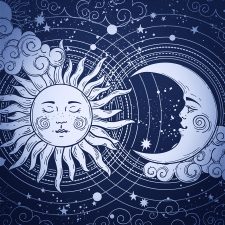How do you define a full moon?

A full moon is when the Sun and the Moon are facing opposite, being in opposite direction from an Earth perspective.
This might feel astonishing if one imagines that the Moon is on one side, the Sun on the other and the Earth in between? Shouldn’t the Earth throw a shadow onto the Moon? Bingo – this is exactly what she does! But only when the Moon is exactly on the Earth orbit, the so called “ecliptic”. When this takes place, we speak of a lunar eclipse!
When the moon is above or underneath the ecliptic (which is mostly the case), one side of the Moon is completely illuminated and uninterrupted from the Earth’s shadow projection of the Sun, and can be viewed from our planet as full moon.
Remember [1]
Full moon means: Sun and Moon opposite each other, Earth in between.
Remember [2]
When the Moon is on the ecliptic > shadow of Earth onto Moon > lunar eclipse. This is why it makes complete sense that a lunar eclipse can only take place at full moon!
Photo: Antusenok/bigstock.com
